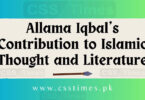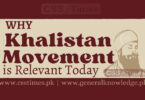Pakistan Affairs Notes
by Dr. Moiz Khan (Assistant Professor)
Dept. of History, University of Karachi
Sample Page of Pakistan Affairs Notes for CSS Aspirants
In 1600 C.E. East India Company was established in England. Queen Elizabeth granted the charter to East India Company to trade in areas East of Africa. This included Sub-continent, Indonesia, and Malaysia etc. In the start the East India Company tried their luck in islands of Indonesia but they were unable to extract desirable profits from there. To make trading more difficult they had a formidable opposition in the form of Dutch. The Islands of Indonesia were already claimed by Dutch and Portuguese. In 1623 an incident permanently convinced British to turn towards India. Twenty one men were killed by Dutch in Amboyna out of which ten were the servants of British East India Company, the incident in known as Amboyna Massacre.
The first British ship landed in India in 1608 at Calicut. This was the time period of the fourth Mughal Emperor Jahangir. He did not allow British to trade in India. However British did not lose hope and continued to convince Mughals for the permission. Finally in 1612 a limited permission was granted to British by Khurram (Shah Jahan) the governor of Gujarat. As a result British erected their first factory in Surat. James I dispatched Sir Thomas Roe to the royal court of Jahangir in 1614.
The main reason of coming of British to India was trade of spices, cotton, jute, rice etc. Secondly they also wanted markets for selling their products. The things which were easily available in India had a high demand in Europe. The traders of Europe always wanted to trade with India and they had come to India by land. However the route from land took years to reach to India from Europe. It took more than two years for Marco Polo to come to India. The major breakthrough in the travel to India was in 1496 when
Vasco de Gama of Portugal crossed the much feared Cape of Storms in the South of Africa (later the same place was named as Cape of Good Hope).
Portuguese opened the sea route to India. They were first people who started to trade with India from Europe. The next European people to follow them were Dutch. England was the third European country to trade with India. Portuguese and Dutch restricted themselves to small areas with in India. On the other hand British tried their luck all over India and it paid off. Within 150 years of their stay in India British were in such a strong position that they started to challenge the local rulers and even the Mughal
Download also: Oxford Dictionary of Word Origins (Download Book in PDF)
1 In 1623 the Dutch governor, Herman Van, stationed there was suspicious about the presence and activities of British. He believed that British are conspiring with Japanese to kill him. As preemptive measure he ordered the killing of 10 British 10 Japanese and one Portuguese man. See, D. K. Bassett (1960). The “Amboyna Massacre” of 1623. Journal of Southeast Asian History, 1, pp 1-19. Emperors.
They challenged and defeated Siraj-ud-Daula the nawab of Bengal in 1757 in the famous battle of Plassey.









Sir! Kindly sand me Pak&hind History
Thank you Sir!
This website is best because it provide you material without any price for preparation of competitive exams.
[…] Pakistan Affairs Notes by Dr. Moiz Khan […]
[…] Download Now […]